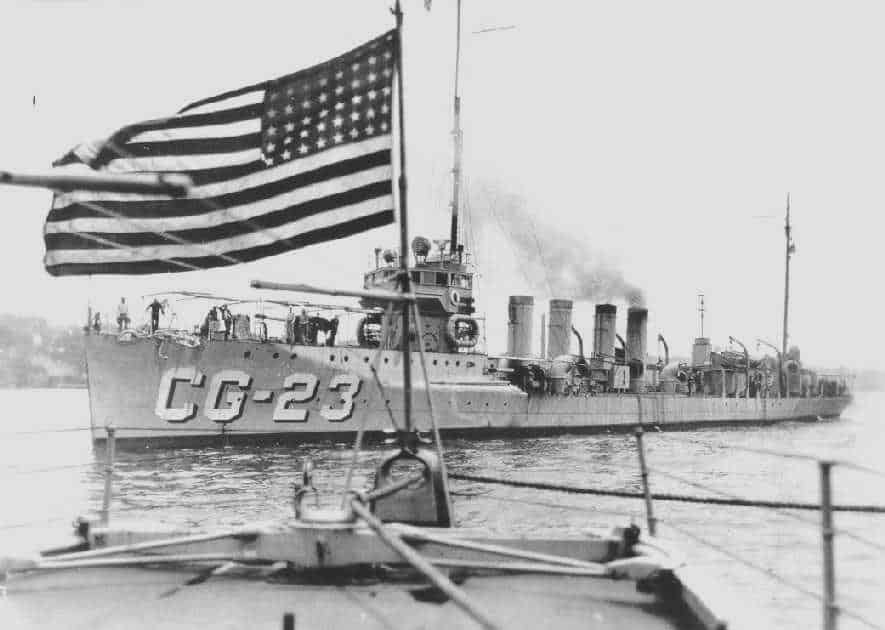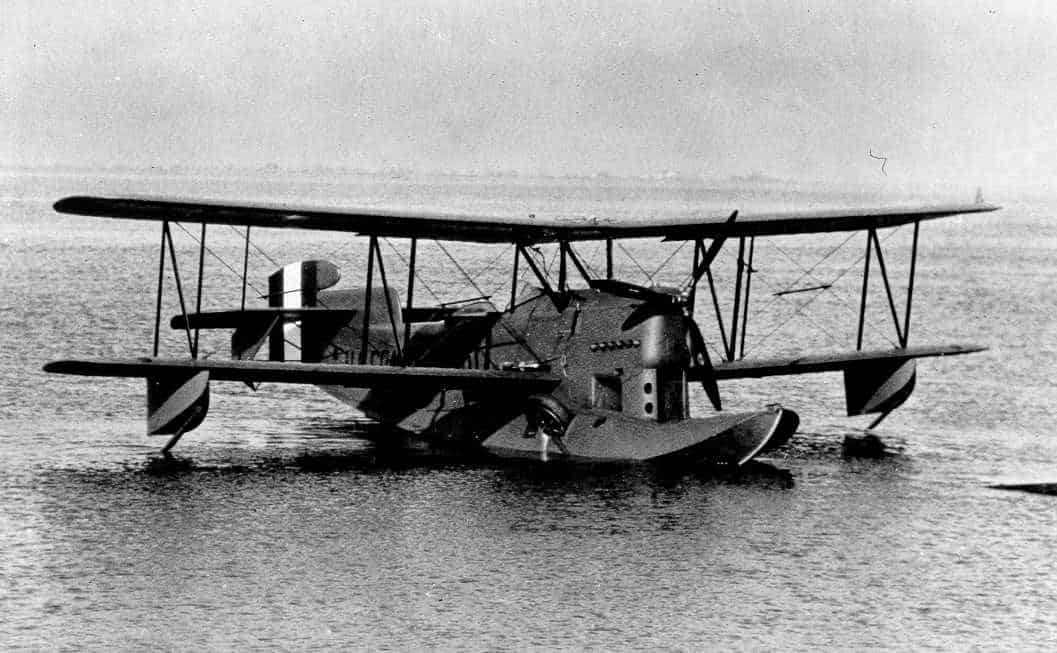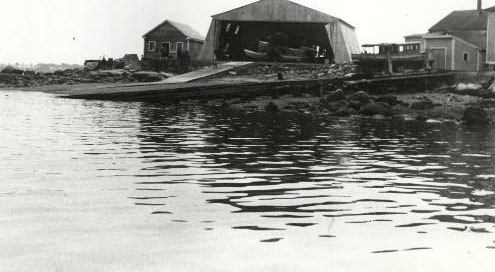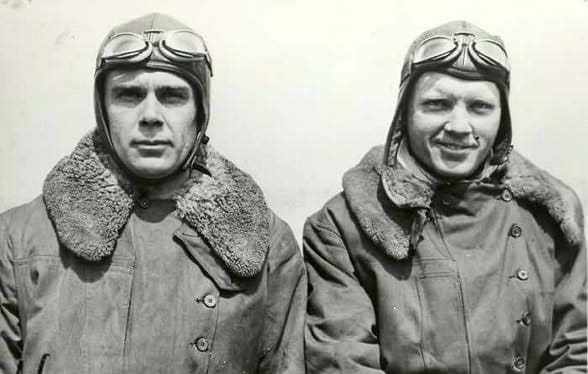 The prohibition of the manufacture, importing, transportation and selling of alcoholic beverages had become the law of the land on January 16, 1920. Enforcement of the law fell to the Treasury Department and as part of the Treasury Department, the Coast Guard was tasked with the interdiction of maritime smuggling. There was a gradual increase in the anti-smuggling efforts on the part of the Coast Guard while remaining at 1920 force levels. Smuggling increased exponentially and Treasury Secretary Andrew Mellon, in his 1923 annual report, recommended the service be enlarged considerably to effectively combat the illegal distribution of alcohol. In April 1924, Congress appropriated $12,194,900 to prepare 20 surplus reserve fleet Navy Destroyers for use by the Coast Guard and build 223 cabin cruisers and 100 small boats. In addition, the authorized number of personnel was nearly doubled.
The prohibition of the manufacture, importing, transportation and selling of alcoholic beverages had become the law of the land on January 16, 1920. Enforcement of the law fell to the Treasury Department and as part of the Treasury Department, the Coast Guard was tasked with the interdiction of maritime smuggling. There was a gradual increase in the anti-smuggling efforts on the part of the Coast Guard while remaining at 1920 force levels. Smuggling increased exponentially and Treasury Secretary Andrew Mellon, in his 1923 annual report, recommended the service be enlarged considerably to effectively combat the illegal distribution of alcohol. In April 1924, Congress appropriated $12,194,900 to prepare 20 surplus reserve fleet Navy Destroyers for use by the Coast Guard and build 223 cabin cruisers and 100 small boats. In addition, the authorized number of personnel was nearly doubled.
The destroyers were reconditioned and the last was on line by the summer of 1925. During the same period the construction of the authorized small patrol boats proceeded. The largest of these were 75 foot in length, had a sturdy wooden hull, were powered with gasoline engines driving them at 13.5 knots and had an enclosed cabin providing adequate quarters for their eight man crew. They mounted a 1-pounder and a .30 caliber machine gun. There were 203 of these boats built and all were on line by mid 1925. The 75 foot patrol boats were called six –bitters because they had six mooring bits. The destroyers worked in concert with two 75 footers. The smugglers, known as blacks, had begun to cruise outside the three mile limit of jurisdiction and unload to fast smaller craft for the run to the shore. The destroyer would locate a black and the 75 footers would picket the vessel. The object was to keep the smuggler from off-loading the cargo to the smaller craft and if accomplished to intercept and apprehend the smaller craft before or as it reached shore.
Air Station Gloucester –Ten Pound Island
The 75 foot patrol boats operated from bases up and down the coast. LCDR Carl Von Paulsen, an aviator, was the commanding officer of Section Base #7 located at Gloucester, Massachusetts. The Gloucester patrol area included the shore line, harbors and bays from Marblehead, Massachusetts to Portland Maine not neglecting the rendezvous locations of the ships offshore. LCDR Paulsen approached LCDR Stephen S. Yeandle, aide to Commandant Billard, with the idea of utilizing aircraft to search and locate both blacks and small boats making a run for shore. LCDR Yeandle thought the concept had merit and approached the Commandant who approved the idea but no funds were available. A Navy surplus Curtiss OU-1C was located and an agreement was made for the Coast Guard to utilize it for a period of a year. It initially flew out of the Naval Reserve Air Station at Squantum, Massachusetts in land plane configuration and then
operated out of a make-shift tent-hangar located on Ten Pound Island in Gloucester Harbor reconfigured as a floatplane. The first use of an aircraft to chase a rum-runner was on 20 June 1925. The OU-1C assisted in the first capture of a rum runner with aviation support on 24 June 1925. Von Paulsen and veteran aviator Leonard Melka flew many thousands of miles on patrol during the first year locating smugglers from the air and directing the patrol boats to them. The experience obtained from operating this single airplane convinced Headquarters of the advantages derived from the use of aircraft in Coast Guard work and it was decided to establish a permanent air station and procure appropriate aircraft.

The Coast Guard Commandant, Admiral Billard, obtained an appropriation of $162,000 for the purchase of five aircraft specifically designed for the Coast Guard. Three were modified Loening OL-5 amphibians with strengthened hulls for rough water landings and larger fuel tanks providing increased fuel for extended law enforcement patrols. They had a large center float faired into the fuselage with wheels arranged so that they could be swung clear when operating from the water. A bi-plane, it had stabilizing floats located at the ends of the lower wing. The wing span was 45 feet and the aircraft length was 35 feet. They had 400hp inverted Liberty engines with a top speed of 120mph and a range of 450 miles at a cruising speed of 75mph. Maximum gross weight was 5471 pounds and the service ceiling was 12,750 feet. In addition to a pilot and an observer the OL-5 could carry one passenger. They cost $32,710 each and were given the numbers CG 1, CG-2, and CG-3.
Two of the aircraft purchased were modified Vought UO-1 seaplanes designated as UO-4s. These aircraft were equipped with the new 220hp Wright J-5C Whirlwind engine and were fitted with the improved UO-3/FU-1 wings. The UO-4 was a bi-plane with a 34 foot 4 inch wingspan and a length of 28 feet 5 inches. They had a top speed of 122mph and a range of 365 miles at a cruise speed of 90mph. A center float was attached to the fuselage and small floats were attached at the ends of the lower wings for stabilization. The gross weight was 2779 pounds with a service ceiling of 14,900 feet. It carried a crew of two. They cost $18,000 each and were given the numbers CG-4, and CG-5.
During the summer of 1926 after blasting, leveling and concrete pouring, a large steel hangar was erected. The first OL-5 aircraft arrived at Ten Pound Island on 14 October 1926. The second OL-5 was assigned to a to new air station that was opened at Cape May N.J. The Third OL-5 arrived at Ten Pound Island on 3 November 1926. The two UO-4s arrived in December of 1926. One of these was assigned to Cape May.
The Coast Guard went on the offensive and the three mile limit was effectively extended by means of agreements with other nations. Faced with a well organized international smuggling syndicate, knowledge of operational practices and the plans of the smugglers were invaluable. A Coast Guard Intelligence Office was established at Headquarters to facilitate the gathering, evaluating and dissemination of information. The radio played a very important part in gathering intelligence information and was utilized by both sides. A Field Intelligence Unit was established under the direction of Lt. Frank Meal and work began on high frequency radio receivers and high frequency radio direction finders to be placed on ships and patrol boats. This not only enabled the interception of radio traffic for intelligence gathering but provided an excellent control net which greatly enhanced the operational effectiveness of Coast Guard activities. This was further enhanced by the development of aircraft radio communications equipment capable of a voice communication range of 150 miles and a CW range of 1200 miles. Radio Electrician A. G. Descoteaux, USCG, stationed at Coast Guard Air Station Gloucester, conceived and developed this idea. He constructed and installed radio equipment in the station aircraft. The system was designed for battery operation completely independent of the aircraft’s regular electrical system. It provided two-way continuous wave telegraph and high-quality voice communication. It was the basis for later Coast Guard aircraft equipment. The work of Descoteaux and C. T. Solt of the Communications Section of USCG HQ resulted in the use of the first loop type radio direction finder.
Smuggling interdiction continued to be the primary mission of the air station. Daily patrols were flown in aircraft not only capable of radio communication with both surface units and shore stations but with the ability to obtain the bearing of a black making a radio transmission. The OL-5s were armed with machine guns and, at least in one recorded incident, they were used to sink numerous wooden crates of whiskey that were dumped overboard by a rum runner. As Rum-Row continued to move further off shore and the search area continued to expand, the most effective utilization of the aircraft was to locate a black, notify Coast Guard surface vessels of its location, and to continue to circle over the black until a destroyer or 75 footer arrived on scene to apprehend or commence picket duty.
The station was simultaneously engaged in the saving of life and property. In the first four years of operation there were 212 cases of assistance rendered embracing casualties to vessels, property and persons. Experiments were conducted in which a shot line, strung between poles, was picked up by the aircraft and carried to a vessel in distress. The line was dropped from the plane to the deck of the vessel in distress and a breaches-buoy is run out to the vessel and survivors are brought ashore by this means. It was used when the vessel in distress was too far from shore for the shot line to reach it or the seas were too rough for the launching of a small boat.
In early 1928 the two UO-4s were transferred to Section Base #6, Fort Lauderdale, Florida to combat the smuggling operations in that area. They enjoyed the same success as they had at Gloucester and Cape May. A Coast Guard air station was established at Dinner Key, Miami, Florida in 1932. A JF-2 was assigned to Gloucester and with the advent of the PJ and RD Dolphin flying boats there was no room to expand the Gloucester base. Gloucester was decommissioned and a new air station was established at Salem, Massachusetts in 1935.
Air Station Cape May
The Highest consumption of alcohol during prohibition took place in the large metropolitan cities. With its many inlets, points, and coves, the coast of New Jersey stood out as a haven for rum-runners. As a result a line of large vessels took up station off the New Jersey –New York coast and serviced hundreds of contact boats that transported the illegal alcohol to shore. The value of aircraft in locating smugglers and directing an intercept by a surface vessel to picket and prevent the off-loading of contraband had been demonstrated. A location to base the aircraft was sought.
The Navy had established a section base at Cape May, New Jersey in 1917 to provide training vessel support activities and communication facilities for coastal defense. Military facilities were built along the harbor front. After World War I the base was adapted to accommodate dirigibles. A hangar 700 feet long and over 100 feet tall was built. The Coast Guard hangar is immediately above the dirigible hangar in the picture below.
In 1924, during the Prohibition era, the Coast Guard established a presence at the base and several cutters were assigned to combat rum-runners operating off the New Jersey Coast. The first aircraft, an OL-5, arrived in October of 1926 and an aviation presence was established. In October of 1930 CDR Von Paulson was assigned to duty as the commanding officer of aviation unit at Cape May. Two pilots had graduated from flight school in 1929 and three more were assigned to flight school in 1930. A Schreck Viking 00-1 seaplane had been purchased and was assigned to Cape May. The first of the RD-4 Dolphins was delivered to the Coast Guard in 1931. By the end of 1932 the five Fokker PJ flying life boats had been delivered. Three of these aircraft were assigned to Cape May. By 5 December 1933 thirty nine States had ratified the Twenty-first Amendment and by proclamation, issued by the President on that date, Prohibition was ended. The primary flight mission at Cape May had already been evolving into search and rescue activities, storm warnings, derelict location, and medical evacuations. The advantage of locating wreckage from altitude was demonstrated by Ensign W.S. Anderson who assisted the cutter Gresham in locating the wreckage of a dismasted schooner. The aircraft located the wreckage six miles distant from the cutter which had already been engaged in search activities. Anderson had the advantage of altitude in locating a low profile object. Other search activities in conjunction with cutters proved their value many times over. The Cape May facilities would continue to expand. An aviation school for enlisted personnel was established at Cape May in 1934. The first of the JF-2 “Ducks” arrived at Cape May at the end of 1934.
The Cape May air station, due to lack of funds, was decommissioned in 1938. However, air patrol detachments were maintained at Cape May until 1941. CDR Stone who had been the commanding officer during this period was assigned as the senior member of the trial board for the flying boat aircraft being built by General Aviation Manufacturing Corporation. He was relieved by LT. Richard L. Burke. Stone established a world speed record for amphibious planes when he piloted Coast Guard JF-2 #167 at a speed of 191.734 miles per hour over a three-kilometer test course on December 20, 1934. LT Burke, utilizing the same aircraft set a speed record of 173.945 miles per hour over a 100 kilometer course with a 500 kilogram load on June 25, 1935. Two days later he set an altitude record of 17,877.243 feet with a 500 kilogram load.
During World War II the Navy upgraded Cape May and used it for training pilots in aircraft carrier operations. The Coast Guard provided search and rescue services. The Navy turned the base over to the Coast Guard after the war and the Coast Guard Receiving Center Cape May opened in 1948. All recruit training functions were consolidated at Cape May in 1982.
In 1969 a new hangar was built and Coast Guard Air Station Cape May was re-established as a helicopter air station.


